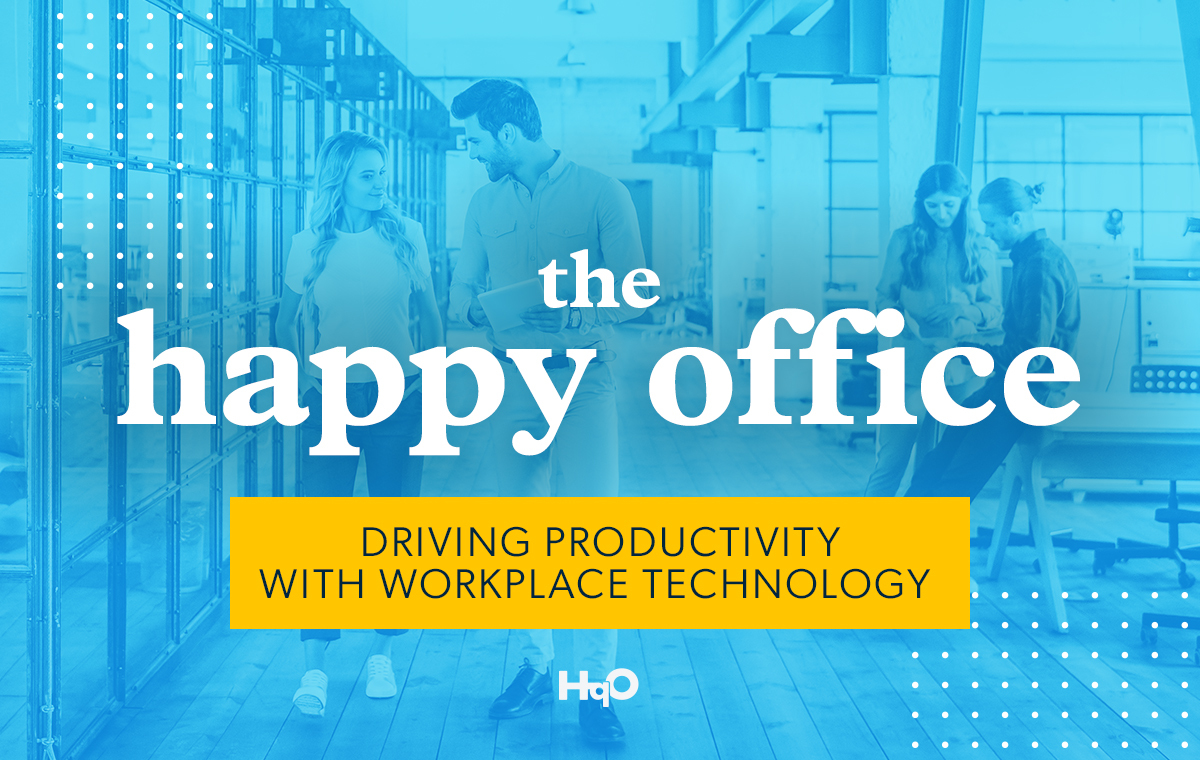As companies around the world embrace hybrid models of working, which see employees splitting their time between home and the office, the concept of productivity is evolving. Organizations are no longer able to quantify such an abstract idea through physical presence alone, as many workplaces will — at least for the foreseeable future — be only partially filled at any given time.
This means you must adjust the ways by which your organization measures and manages productivity. For the sake of clarity and brevity, we will break it into four categories and provide examples of how HqO’s Workplace Experience Platform can act as a foundation on which to drive productivity within each.
Engagement
Always a hot topic in a professional environment, employee engagement is often directly linked with productivity. When a Gallup study, for example, compared “top-quartile with bottom-quartile engagement business units and teams, [it] found median percentage differences of 18% in productivity.”
Managers, however, have a great deal of influence when it comes to improving workplace productivity, with “70% of the variation in a team’s engagement within managers’ span of control.”
A workplace experience platform also carries such influence, unifying existing organizational tools and services that mirror the experience of everyday personal consumer services, from events to the use of building resources, to even food ordering. It also enables employees to better interact with their offices, whether they’re booking rooms or desks, communicating with colleagues, or RSVPing to events.
Collaboration
Whether employees are working from home or in their workplace, the need for collaboration is paramount. When polled by McKinsey regarding remote – and therefore hybrid – work, “more than a third of respondents ranked collaboration in their top five.” Tools for collaboration also ranked highly.
With HqO’s workplace experience platform’s aforementioned room and desk booking features – as well as communication tools that enable colleagues to see who is in the office and when – teams and individual employees are able to better and more effectively plan their schedules. They’ll develop daily plans that are centered around collaboration, rather than playing a guessing game, potentially arriving at the office without the ability to work together with their colleagues.
Well-being
The COVID-19 pandemic turned up the spotlight already shining on both employees’ physical and mental well-being. Forbes even goes as far to call it the “future of work.”
“The pandemic,” the article states, “has given employers increased visibility into the life struggles of their employees and has shifted the focus from just organizational issues to individual human life experiences. Leaders now view well-being not just as an employee benefit but as an opportunity to support employees in all aspects of their personal and work lives.”
Another Gallup study brings well-being into the arena of productivity: “When your employees’ wellbeing is thriving, your organization directly benefits – they take fewer sick days, deliver higher performance, and have lower rates of burnout and turnover.”
Here, a workplace experience platform can also play a large role, taking employees’ personal and professional well-being into consideration by enabling them to book fitness and wellness classes, access wellness resources, make use of bike-sharing services or healthy commuting options, and a wide array of on-site or local healthy food options.
Efficiency
An efficient workplace is one that works both smarter and harder – and therefore more productively. With the ability to connect, communicate, and collaborate when and how they want, employers and employees alike can ensure that their needs are met and cared for, and their days conveniently planned ahead of time. This saves time by reducing the number of hours employees must spend attending to objectively unproductive administrative tasks. Instead, they can spend it on what matters: their work.
Here, employers can leverage a workplace experience platform to offer digital features such as easy room and desk reservations; efficient visitor management; workplace convenience services such as dry cleaning and retail; food ordering; communication tools; and other methods through which employees can make better use of their time.
Want to learn more about harnessing the power of workplace technology and productivity? Schedule a demo today.



